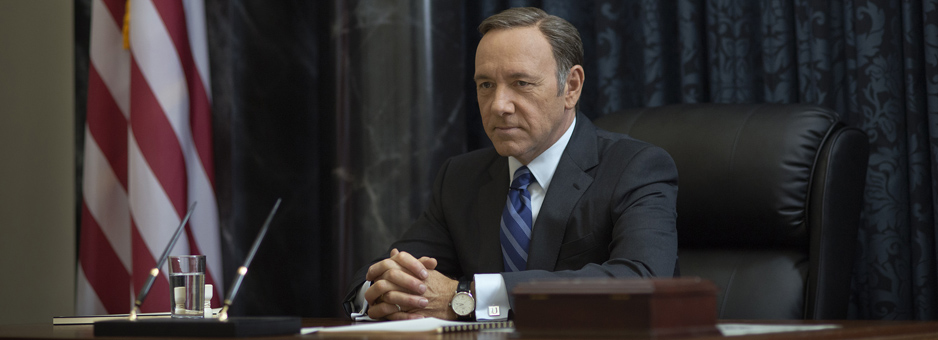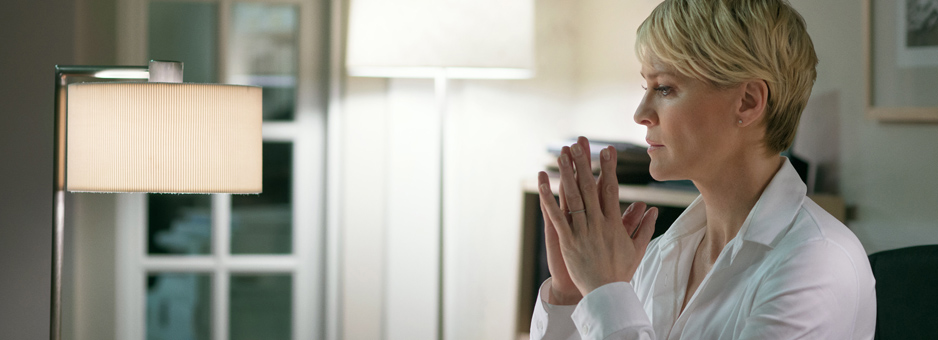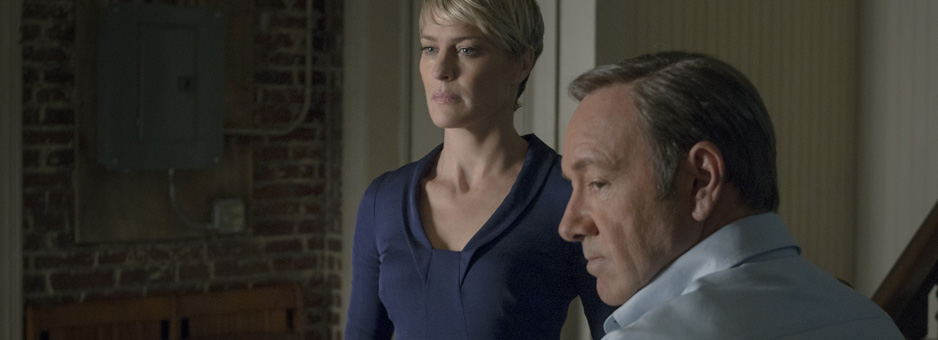Filmlight’s Baselight Helps Encore finish ‘House of Cards’ Season Two in 4K
The second season of House of Cards, the political drama from Netflix, was released on 14 February 2014. For the first time, 4K and Ultra HD were among the deliverables from post-production and VFX company Encore, a Deluxe Entertainment Services company.
The series was shot using RED EPIC cameras at 5K resolution. Some scenes were shot using RED’s HDR extended dynamic range mode, which gives a much greater contrast range and broader colour gamut. The native camera raw files were delivered to Encore for the edit and grade, then scaled in 4K to match the highest resolution deliverable.
In charge of the grade was Lead Colourist Laura Jans-Fazio, who worked on a Baselight TWO system with the Blackboard control surface from FilmLight at Encore’s Los Angeles location. The Baselight TWO was networked to a Baselight ASSIST workstation to help prepare the project. With 13 episodes, all at 4K, the sheer amount of data to be managed was huge. Careful workflow planning and real-time performance – two strengths of the FilmLight technology – were critical to the success.
Collaboration
Co-Producer Peter Mavromates and Post Supervisor Hameed Shaukat worked directly with Laura on the grade, with input from Director David Fincher and DoP Igor Martinovic. Viewing content shared via the PIX System digital collaboration tool, Fincher and Martinovic used calibrated Sony OLED monitors to see precisely what Jans-Fazio was creating in the colour suite. Jans-Fazio would grade half an episode, send it to PIX for Fincher and Martinovic to review and then begin working on the rest of the episode.
“We were able to extract the feedback received and import it directly into Baselight,” explained Morgan Strauss, Encore SVP, Operations. ”Baselight could interpret the XML files from PIX and display the notes on screen at the relevant moment, really speeding the final grade for the colourist and ensuring that no notes were missed. It was essential to maximise this asynchronous collaborative process so we could fully realise the creative needs of the producers and DP.”
The overall look of the series has a slightly moody cast, reflecting the tense, internal political intrigues of the story. The grade avoids over-saturated colours, maintaining the palette throughout – which was Fincher’s vision for the show.
Power
One of the important ways in which Baselight contributed to achieving such a successful result in 4K in limited time was because of its huge processing power. This means that virtually everything – even multi-layer effects – could be achieved in real time, so the team was never waiting for a shot to process. They could see the effects of changes instantly.
Baselight has a floating-point processing capability, which gives it huge control over the quality of the colour. It also allows it to dig deep into the extended range of HDR to pull details from the extreme ends of the picture and help them sit comfortably for standard viewing.
Examples on House of Cards were some shots where, after the grade, a window behind the actors became burnt out. Colourist Laura Jans-Fazio was able to use the HDR to get real detail in the window and composite that into the overall picture to achieve a more natural result.
“We often used multiple shapes in a single shot, and being able to do that in one layer in Baselight was a real time-saver,” said Jans-Fazio. “We could also composite through VFX mattes, and do monitor replacements, in real time.
“I also like the fact that Baselight has four different keying options, including a proper 3D keyer which is unique to Baselight.”
Delivery
The team output the final graded versions of all 13 episodes in uncompressed 4K, which went to Netflix’s own compression engines. The series was also delivered in HD. Because of the real-time performance of Baselight, creating the deliverables was a streamlined process.
“Keeping 13 episodes of 5K media live throughout the post-production process required us to be as efficient as possible,” explained Strauss. “Baselight allowed multiple operators to work on the series simultaneously, even from different rooms; it was key to helping us stay on track.”
“Baselight has been developed to be really intuitive, with a rich toolset that gives me complete freedom in my grading,” Jans-Fazio concluded. “Suggestions and requests to FilmLight from colourists, assistants and engineers are more often than not generously implemented. The development and support team at FilmLight are awesome – they are so smart, they really get what we need.”
Read
Find out more about Baselight on House of Cards.
Download
House of Cards Case Study (PDF)






